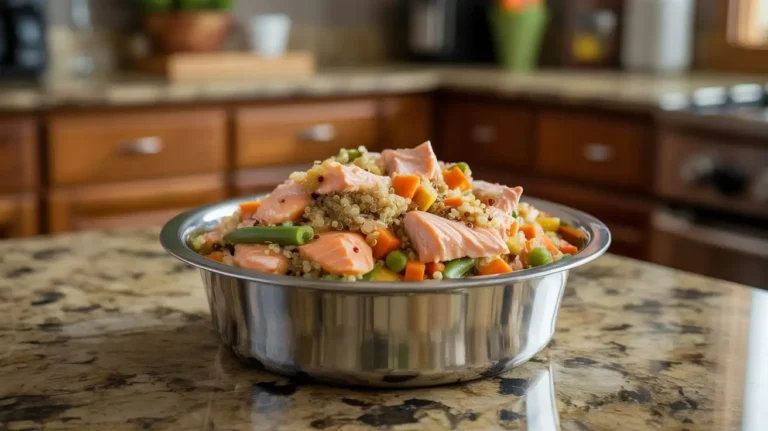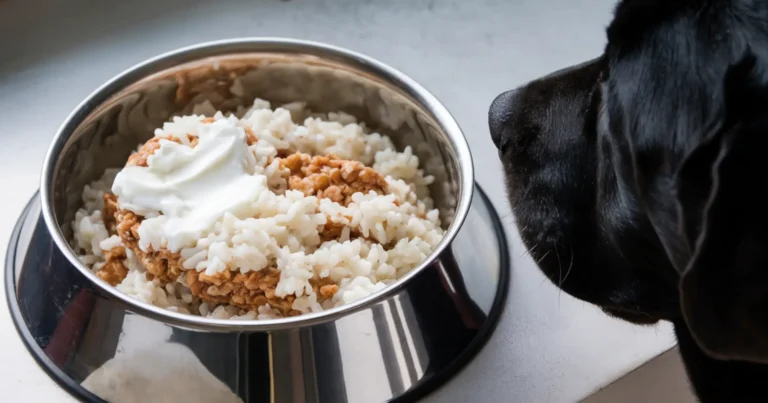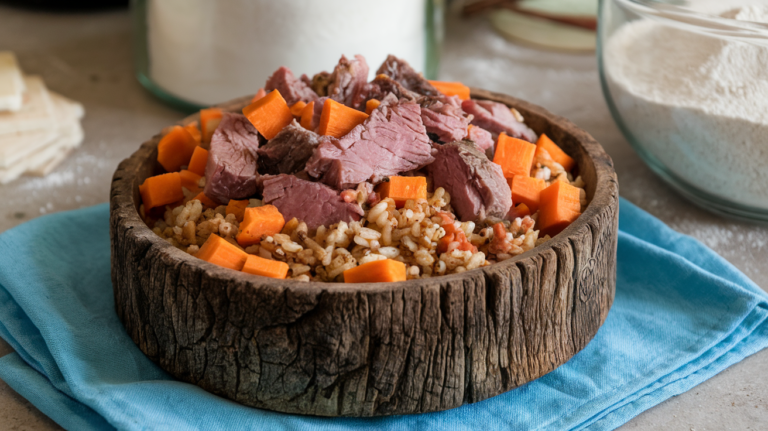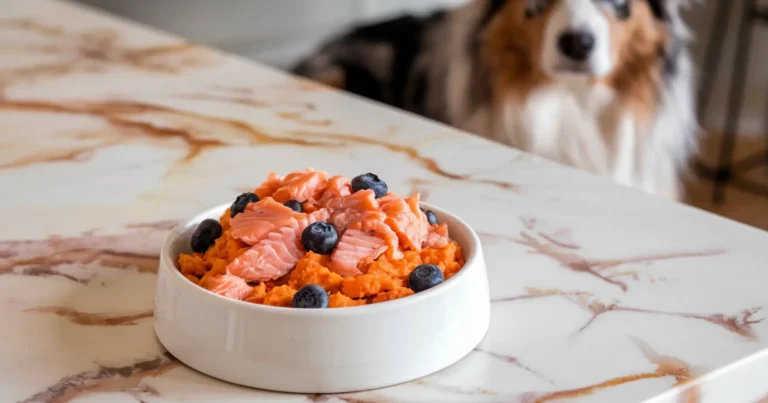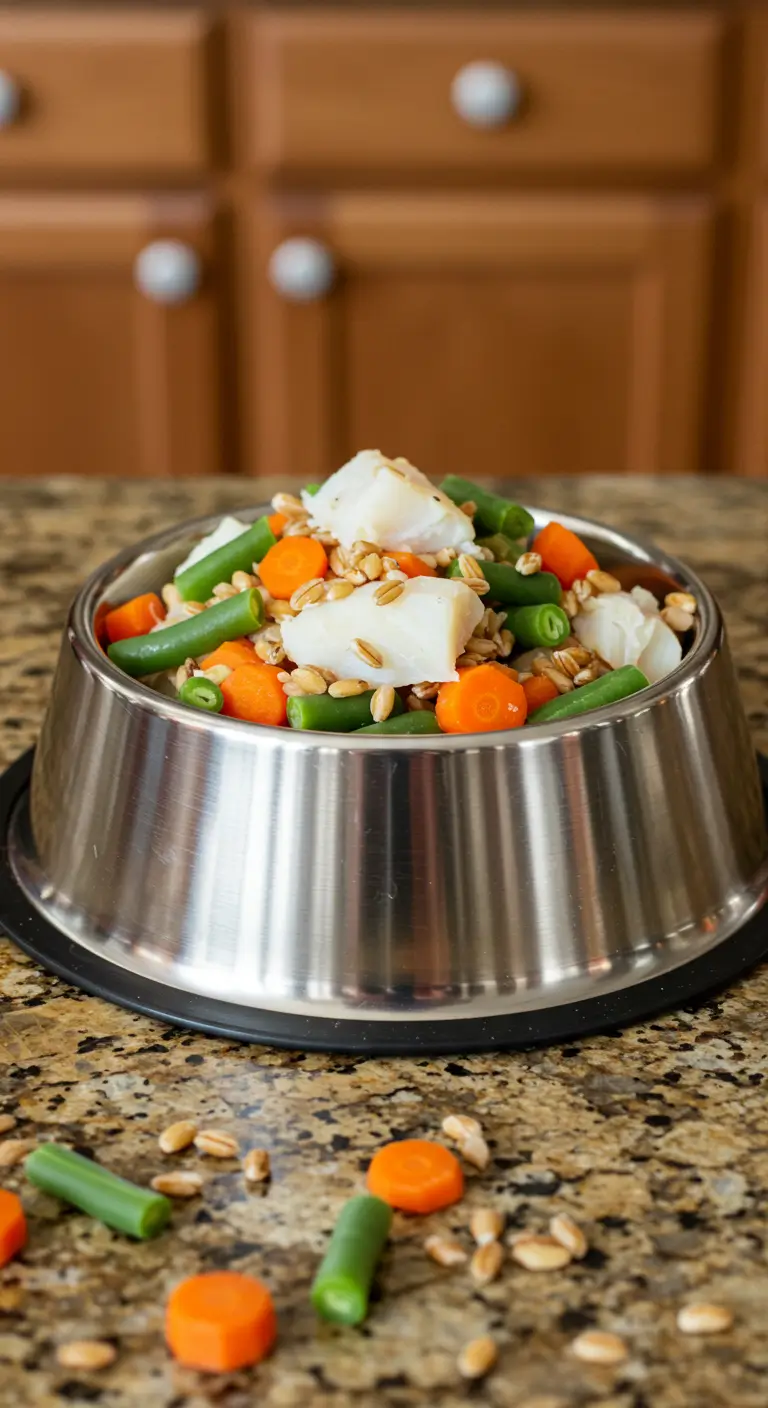Soft Chicken Dog Treats with Rice: Easy 30-Minute Recipe
Last Tuesday evening, I was preparing for Benji’s weekly agility class when I discovered we were completely out of his training treats. With only 30 minutes until we needed to leave, panic set in – until I remembered the leftover chicken and rice from dinner. What started as a desperate improvisation became our most successful chicken dog treats recipe, transforming not just that training session but every one since.
These soft, tender treats proved so effective that Benji now anticipates training time with an enthusiasm I’d never seen before. The gentle texture allows for rapid consumption without breaking his concentration, while the familiar chicken and rice combination appeals to his sometimes-picky palate. What began as a last-minute solution has evolved into our go-to recipe for daily training and special rewards.
Table of Contents
What Makes Chicken and Rice Work So Well
The pairing of chicken and rice represents one of nature’s most successful combinations for canine nutrition and palatability. Chicken delivers complete, high-quality protein that supports muscle development and provides sustained energy, while rice contributes easily digestible carbohydrates that won’t upset sensitive stomachs. Together, they form chicken dog treats that work for virtually every dog.


Rice serves multiple functions beyond basic nutrition in these chicken dog treats. It acts as a natural binding agent, helping maintain the structure while contributing to the soft, chewy texture that dogs find irresistible. The mild, neutral flavor of rice allows the chicken to shine while providing substance that makes each treat satisfying and filling.
The digestibility factor becomes particularly important for training applications where dogs might consume numerous treats in short periods. Unlike richer proteins that could cause digestive upset with frequent consumption, these chicken dog treats remain gentle on the stomach even during intensive training sessions. The rice component provides steady energy release without causing blood sugar fluctuations that might affect focus and performance.
Complete Recipe Guide
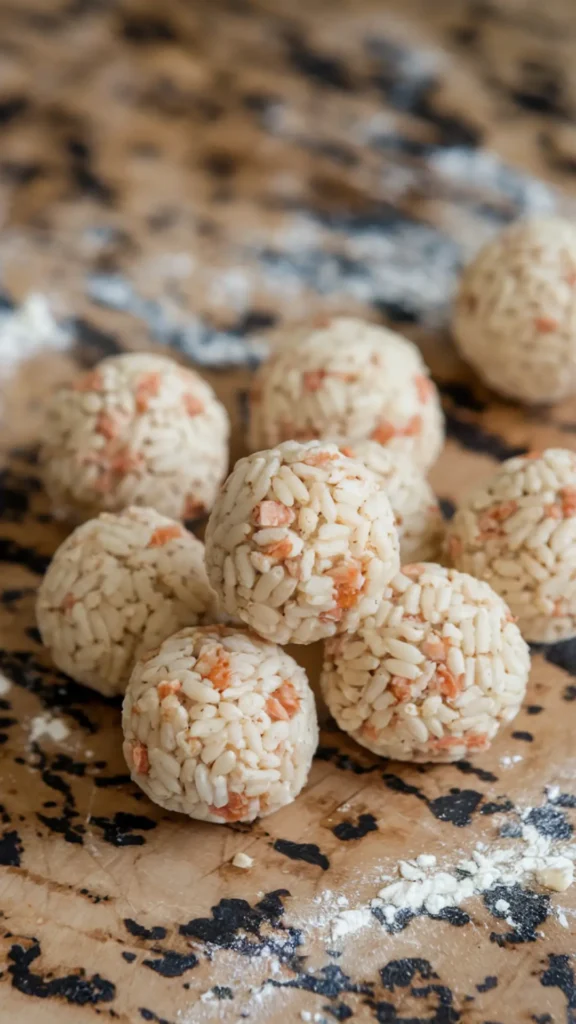
Recipe Overview
- Prep Time: 10 minutes
- Cooking Time: 20 minutes
- Total Time: 30 minutes
- Yield: 35-40 small treats
- Difficulty Level: Beginner-friendly
- Best For: Training, daily rewards, sensitive stomachs
Ingredients
- 8 oz boneless, skinless chicken breast, cooked and cooled
- ¾ cup cooked white rice, cooled
- 1 large egg, beaten
- 1¼ cups whole wheat flour
- 2 tablespoons low-sodium chicken broth
- 1 tablespoon olive oil (optional, for extra moisture)
Equipment Needed
- Food processor or blender
- Large mixing bowl
- Baking sheet
- Parchment paper
- Cookie cutters or a knife
- Measuring cups and spoons
Step-by-Step Instructions

Step 1: Prepare Your Base
Cook the chicken breast thoroughly by boiling or baking until it reaches an internal temperature of 165°F. Let cool fully before chopping into small pieces. Cook rice according to package directions, then cool to room temperature. Having properly cooled ingredients prevents the egg from cooking when mixed.
Step 2: Create the Mixture
Process the cooled chicken in a food processor until finely chopped but not pureed – you want small, visible pieces throughout your chicken dog treats. Transfer to a large mixing bowl and add the cooled rice, beaten egg, and chicken broth. Mix thoroughly until well combined.
Step 3: Form the Dough
Gradually add flour while mixing until the dough comes together and is no longer sticky. The consistency should be soft but manageable – if too wet, add more flour; if too dry, add a bit more broth. The dough should hold together when squeezed but not stick excessively to your hands.
Step 4: Shape and Bake
Roll the dough to ¼-inch thickness on a floured surface. Cut into small shapes suitable for your dog’s size – smaller pieces work better for training. Place on parchment-lined baking sheet and bake at 350°F for 18-22 minutes until edges are lightly golden and treats feel firm to the touch.
Step 5: Cool Completely
Allow chicken dog treats to cool entirely on the baking sheet before handling. This cooling process helps them firm up to the proper texture while allowing flavors to settle. Proper cooling ensures the treats won’t crumble when stored.
Serving Guidelines
Start with one small piece to assess your dog’s reaction, especially if they haven’t tried homemade chicken dog treats before. For small dogs under 20 pounds, half a treat makes an appropriate reward size. Medium dogs (20-50 pounds) can handle 1-2 whole treats per training session, while larger dogs can enjoy 2-3 pieces as rewards.
Remember that treats should comprise no more than 10% of your dog’s daily caloric intake. These chicken dog treats are nutritionally dense, so adjust your dog’s regular meal portions slightly when using them frequently. The high protein content makes them excellent for active dogs who need sustained energy for exercise and training.
Expert Tips and Solutions
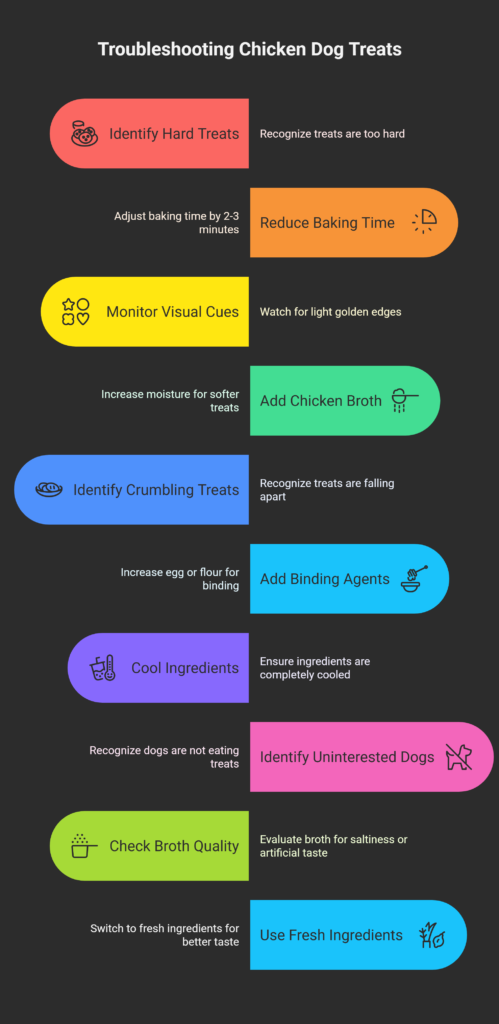
If your chicken dog treats turn out too hard, reduce the baking time by 2-3 minutes in your next batch. Oven temperatures can vary, so watch for the visual cues of light golden edges rather than relying solely on timing. For softer treats, add an extra tablespoon of chicken broth to increase the moisture content.
When treats crumble or fall apart, this usually indicates insufficient binding. Try adding an extra beaten egg or increasing the flour content gradually until the dough holds together properly. Ensure your chicken and rice are completely cooled before mixing, as residual heat can affect the binding properties of the egg.
For dogs who seem uninterested in the treats, check that your chicken broth isn’t too salty or artificial-tasting. Sometimes switching to a different brand or making your own simple broth from chicken bones can dramatically improve palatability. Fresh ingredients always produce better results than those that have been stored for extended periods.
Proper Storage Methods
These chicken dog treats require refrigeration due to their moisture content and fresh ingredients. Store in airtight glass containers in the refrigerator for up to one week. The rice content makes these treats more perishable than all-meat varieties, so proper storage becomes essential for both safety and quality.
For longer storage, freeze the treats in portion-sized containers for up to three months. Separate treats with parchment paper to prevent sticking, and thaw only what you need for daily use. Frozen treats can actually be given directly to dogs on hot days – many enjoy the cooling effect and firmer texture.
Never leave these chicken dog treats at room temperature for more than a few hours, especially in warm weather. The combination of chicken and rice creates an environment where bacteria could grow if not properly refrigerated. When in doubt about freshness, trust your nose and discard any treats that smell off or show signs of spoilage.
Homemade vs Commercial Advantages
You have total control over the quality and freshness of the ingredients when you make your own chicken dog treats.. Commercial alternatives often contain preservatives, artificial flavors, and low-quality protein sources that provide little nutritional value. Many also contain high levels of sugar or salt, which can be dangerous if consumed frequently.
Cost comparison consistently favors homemade production, with these chicken dog treats costing approximately 60-70% less than premium commercial equivalents. The simple ingredient list keeps expenses low while quality remains high. You’re also avoiding the markup associated with packaging, marketing, and distribution that commercial products require.
The freshness factor cannot be overstated – these chicken dog treats maintain peak flavor and nutritional value because you’re making small batches and consuming them quickly. Commercial treats may sit on shelves for months, losing potency and developing stale flavors that reduce their training effectiveness.
Exploring More Treat Options

If your dog enjoys these chicken dog treats, you’ll want to explore the complete range of soft treat options available. The gentle texture and appealing flavors make this recipe an excellent introduction to homemade treat preparation, building confidence for more adventurous recipes.
Similar protein-based options often prove equally successful for dogs who appreciate these chicken dog treats. Turkey & Cranberry Chews offer a seasonal twist with antioxidant benefits, while Beef & Carrot Nuggets provide heartier flavors for dogs who prefer traditional meat tastes.
Fish-based alternatives like Salmon & Sweet Potato Chews deliver omega-3 benefits that complement the protein focus of these chicken dog treats. For special occasions, Duck & Blueberry Soft Bites provide gourmet flavors that turn ordinary treat time into celebration moments.
Gentler options such as Egg & Oatmeal Soft Bites work well for dogs with food sensitivities, while Lamb & Mint Soft Treats offer novel protein sources for dogs with common allergies. You can find the complete collection in my guide to 7 perfect soft and chewy dog treats for a comprehensive variety.
Important Safety Guidelines
To get rid of any possible bacteria, cook chicken until the internal temperature reaches 165°F. Visual cues alone may not always indicate proper cooking, so use a meat thermometer to confirm. When chicken is cooked properly, its juices should run clear, and there should be no pink spots visible.
Maintain clean preparation surfaces throughout the cooking process. Wash hands thoroughly after handling raw chicken and before touching other ingredients. Use separate cutting boards for raw meat and other ingredients to prevent cross-contamination that could affect both human and pet safety.
Monitor your dog for any adverse reactions when introducing these chicken dog treats, especially if they have food sensitivities or allergies. While chicken and rice are generally well-tolerated, individual dogs may react differently. Start with small amounts and observe for any digestive upset, skin irritation, or behavioral changes.
Essential Points to Remember
- Rice and chicken make the perfect combination for training efficiency and digestibility.
- Proper cooling of ingredients before mixing ensures optimal texture in finished treats
- These treats require refrigeration and should be consumed within one week
- Cost savings of 60-70% compared to premium commercial alternatives
- Texture should be soft but firm, with visible chicken pieces throughout
- Ideal for dogs with food allergies or sensitive stomachs
- Excellent introduction to homemade treat preparation for beginners
Final Thoughts
These chicken dog treats have revolutionized our training sessions and daily bonding routines. The simple preparation process yields treats that rival expensive commercial alternatives while providing the satisfaction of knowing exactly what goes into every bite. The immediate positive response from most dogs makes this recipe a winner for both novice and experienced treat makers.
The versatility of these chicken dog treats extends beyond basic training applications. They work wonderfully for medication delivery, stress reduction during travel, and special reward occasions. The familiar flavors provide comfort in new situations while the soft texture accommodates dogs with dental sensitivities or age-related chewing difficulties.
Whether you’re seeking effective training tools, economical treat solutions, or simply want to provide the highest quality nutrition for your companion, these chicken dog treats deliver on all fronts. The 30-minute time investment yields benefits that extend far beyond the treats themselves, strengthening the bond between you and your dog while supporting their health and happiness.
Frequently Asked Questions
How long will these chicken dog treats stay fresh?
These chicken dog treats stay fresh for 5-7 days when stored properly in airtight containers in the refrigerator. Due to the fresh chicken and rice content, they require refrigeration to prevent spoilage. For longer storage, freeze in weekly portions for up to 3 months without loss of quality or nutritional value.
Is it possible to use brown rice instead of white rice in this recipe?
Yes, brown rice can replace white rice in these chicken dog treats, though it may create a slightly denser texture. Cook the brown rice until very tender and allow complete cooling before mixing. The higher fiber content provides additional nutritional benefits, but you may need to adjust liquid ratios slightly for optimal consistency.
Are these chicken dog treats suitable for puppies?
These treats work well for puppies over 12 weeks old when cut into appropriately small pieces. The gentle ingredients support the development of the digestive system while the soft texture accommodates puppy teeth. However, limit treats to no more than 10% of daily caloric intake to avoid interfering with balanced puppy nutrition.
What should I do if my dog seems uninterested in these treats?
If your dog shows little interest in these chicken dog treats, first check that all ingredients are fresh and the chicken broth isn’t overly salty. Try warming one treat slightly to enhance the aroma, or add a small amount of low-sodium chicken broth to increase moisture and flavor appeal.
Can I make larger batches and freeze portions?
Absolutely! This recipe scales well for larger batches. Double or triple all ingredients proportionally and extend baking time by 2-3 minutes to accommodate the increased quantity. Divide finished treats into weekly portions before freezing to avoid repeated thaw cycles that could affect texture and quality.
References
- American Kennel Club – Canine Nutrition Guidelines
- Association of American Feed Control Officials – Pet Treat Safety Standards
- Journal of Animal Science – Protein Requirements in Adult Dogs
- Veterinary Practice – Food Safety in Pet Treat Preparation
Your Dog Tried It? Drop a Review Below!
There are no reviews yet. Be the first one to write one.



